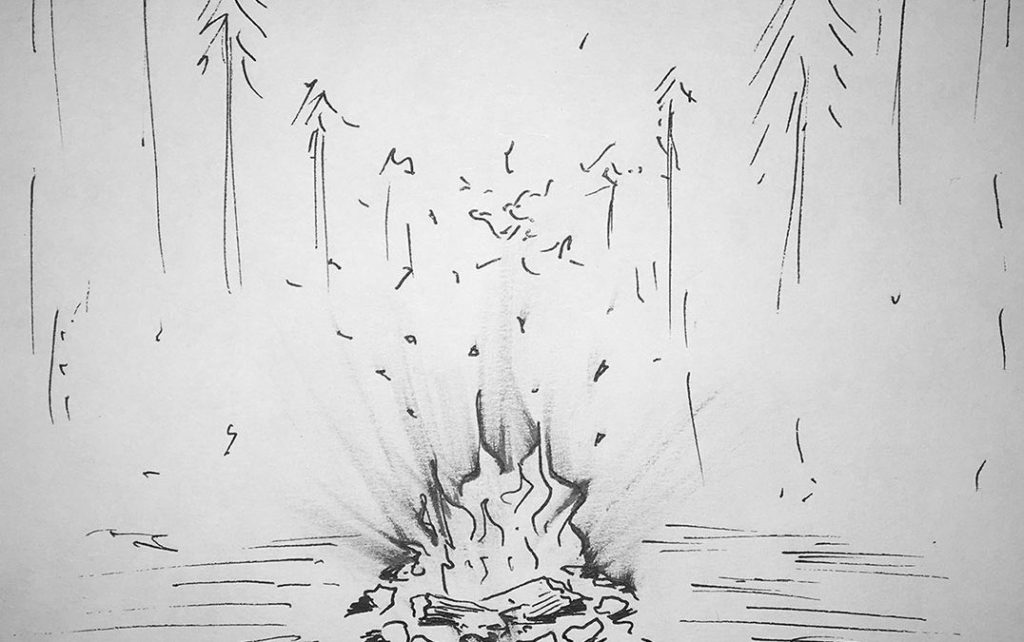
Why strive for beauty? Why seek transcendence? Why hope to create things that will outlast me, to be cared for and loved by others long after I am gone?
I didn’t come looking for answers to those questions today, in a meeting with a dozen engineers and neuroscientists. My mission at Arup this afternoon was to imagine how to measurably improve the wellbeing and enjoyment of two thousand employees in their new office space. But by the time we all went home that night, it was those deeper, more fundamental questions that played again and again in my mind.
Tristram Carfrae was the one to bring us all together. Like me, he enjoys getting to the root of things. And so he invited a couple named Alicia Fortinberry and Bob Murray to speak to us about their findings on the genetic basis for human needs and wellness.
Searching for the roots of who we are as humans, Alicia and Bob looked to the distant past. Before agriculture, before civilisation, and certainly before working in office buildings forty hours a week, our ancestors lived for thousands of generations as hunter gatherers in delicate balance with nature. Our physiology and our psychology are much more imprinted by that ancient life in forest and savannah than by the urban lifestyle that began with the agricultural revolution twelve thousand years ago.
What bearing does that have on architecture and design? Alicia and Bob explained to us that the survival of early humans was based on our ability to form strong social bonds. We have short teeth, no claws, and weak muscles compared to other apex predators. For our hunting and gathering forebears, the group was the key to survival, and expulsion from the band or tribe was equivalent to a death sentence. And so, they explain, our greatest fear is the possibility of rejection and social isolation. Studies have shown that the underlying motivation for most of our behaviour, even in the context of a contemporary office job, is this basic biological need for belonging to a tribe or group. We constantly strive for close relationships, seek social acceptance, and hold on to security while fearing change.
But we no longer roam in bands of thirty, hunting and foraging in a simple but timeless routine. Our lives are deeply complex, interwoven with vast numbers of other people and subject to extraordinary change. Technology allows us to extend our reach, stretch our consciousness, and expand our influence beyond anything imaginable before. And yet according to Alicia and Bob, this extending, stretching, and expanding can cause us psychological strain.
In my time, a typical office worker flies around the world in airplanes, holds teleconferences with people in different cities, and receives hundreds of electronic messages each day. Through technology, we are also learning how to optimise workers’ time and utilisation of space. “Agile” work practices allow us to pack in more workers into a smaller space by shifting them around day to day and eliminating unused desks. Adaptive resource management is finding ways to reduce down-time of workers by shifting them from task to task and team to team without gaps of “unproductive” time. All of this increases productivity and drives progress.
And yet the pace of this constant change becomes overwhelming to many of us. Alicia and I talked at length about this during dinner. Our bodies are literally programmed to seek security in groups through close relationships and stable bonds. And yet our world is increasingly exposing us to a maelstrom of change. When all that is solid melts into air, can we still feel a sense of belonging and find a stable reference point that grounds us within a group?
Alicia and I imagined that the more intense the change we face on one hand, the greater the need for an anchoring identity on the other. The more we ask our workers to extend and stretch and expand, the more we need to provide them with fixed reference points that remind them they are still safe, secure, and part of a group they know. This is a critical task of all of us as designers.
You remember that when I established my design studio our goal was to measurably improve wellbeing through innovative and beautiful designs. It was always easy to understand how innovation and technology like sensors, measurements, and data analytics would be core to our mission. But beauty? After this long day at Arup I feel a renewed confidence that beauty is also essential to our mission. Now I understand that there could be something in our psychology, daresay even in our genetic blueprint as humans, that needs incredible stories, anchoring rituals, and objects of exquisite beauty. Perhaps we need to have around us something worth preserving, something that transcends the day to day, and helps to anchor us with a lasting sense of identity—not only as individuals, but also as groups.
Tristram seems to have an instinct for that fact. And perhaps Ove Arup knew this as well. The group he created has lasted more than thirty years after his death, and I imagine it will still be famous when you are old enough to read this. No wonder he was my role model for setting up my own studio (decades ago, by the time you read this).
All best wishes, your grandfather. 2 February 2018. While listening to Steep Hills of Vicodin Tears, by A Winged Victory for the Sullen.